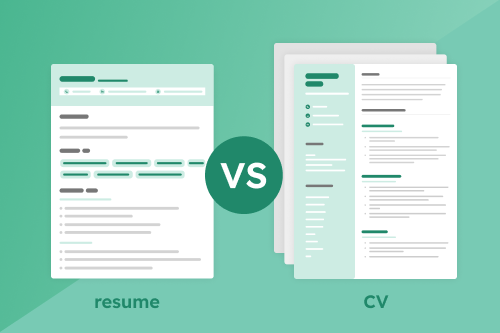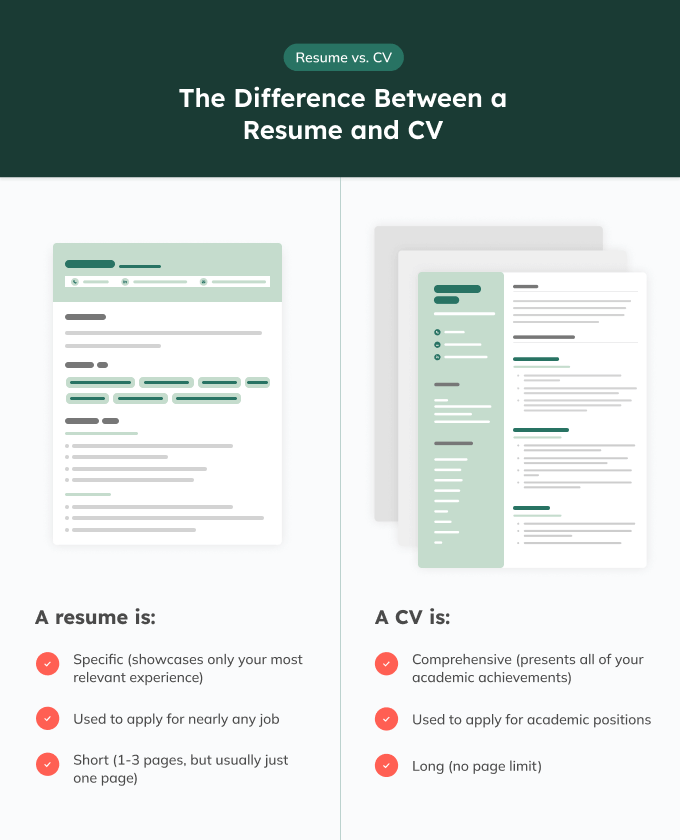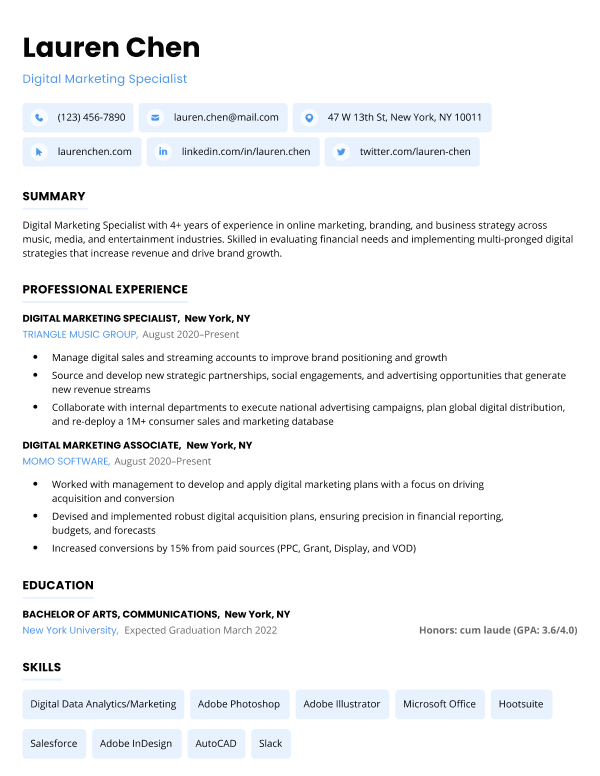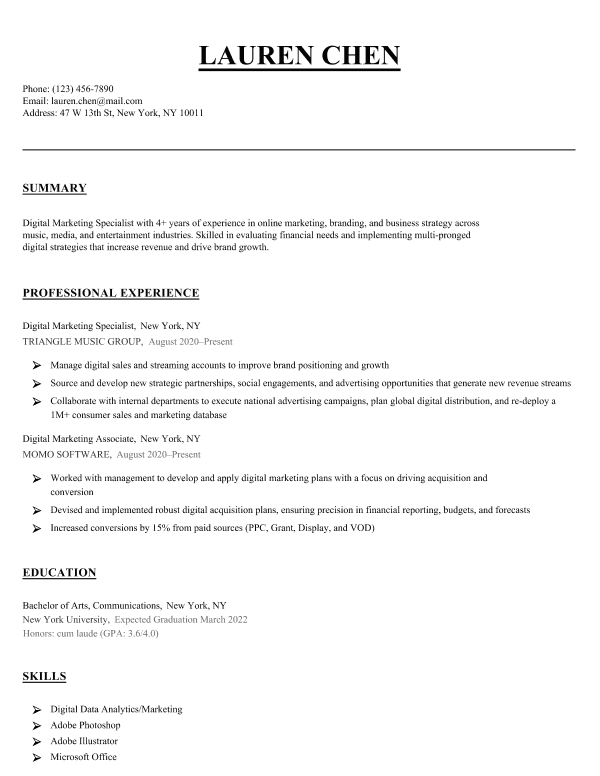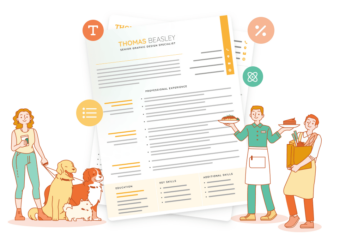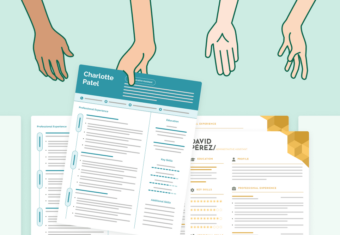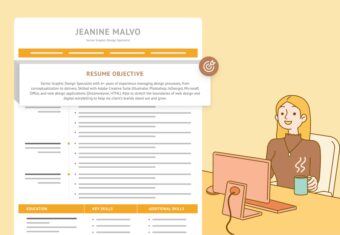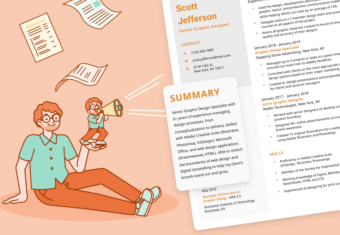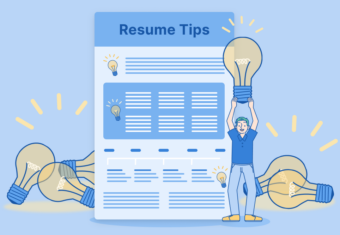If you’re researching how to put together a job application, you’ve probably seen the words “CV” and “resume” used in place of each other.
So what’s the difference between a CV and a resume? It’s actually pretty simple:
What's the difference between a CV and a resume?
In most cases, a resume and a CV are just different words for the same thing. Both words refer to the document you provide to employers outlining your work history and skills. The difference is that Americans use the word “resume,” while people in most other countries use the word “CV.”
The confusion comes from EU and UK websites showing up in Google search results when you look for job-hunting advice.
However, it’s not always so simple. In the United States, the word “CV” also refers to an academic CV – a lengthy document used to apply for positions in academia.
Below, we explain more about the differences between an academic CV and a resume:
A closer look at CVs
So what’s a CV in the American context?
A CV (or curriculum vitae) is a document that provides an overview of your full academic career and professional history, including your publications, conferences, teaching experience, educational history, dissertations, and more.
An academic CV is used specifically to apply for grad school, PhD programs, or positions in academia.
Additionally, there’s no limit to how long a CV should be, and in some cases they can stretch more than 10 pages in length.
What to include on a CV
Here’s what to include on your CV if you’re putting together an application for an academic position:
- Contact information
- Personal statement
- Education
- Employment history
- Skills
- Publications
- Honors and awards
- Certifications
- Grants and fellowships
- Teaching experience
- Research projects
- Memberships
- Dissertations
- Conferences
CV Example
This academic CV was written by G. Richard Scott, a Professor of Physical Anthropology at the University of Nevada (the contact details are made up to protect his privacy).
Dr. Scott has been part of the American university system for over 40 years, so his CV dates back to the 1970’s. It’s 24-pages long.
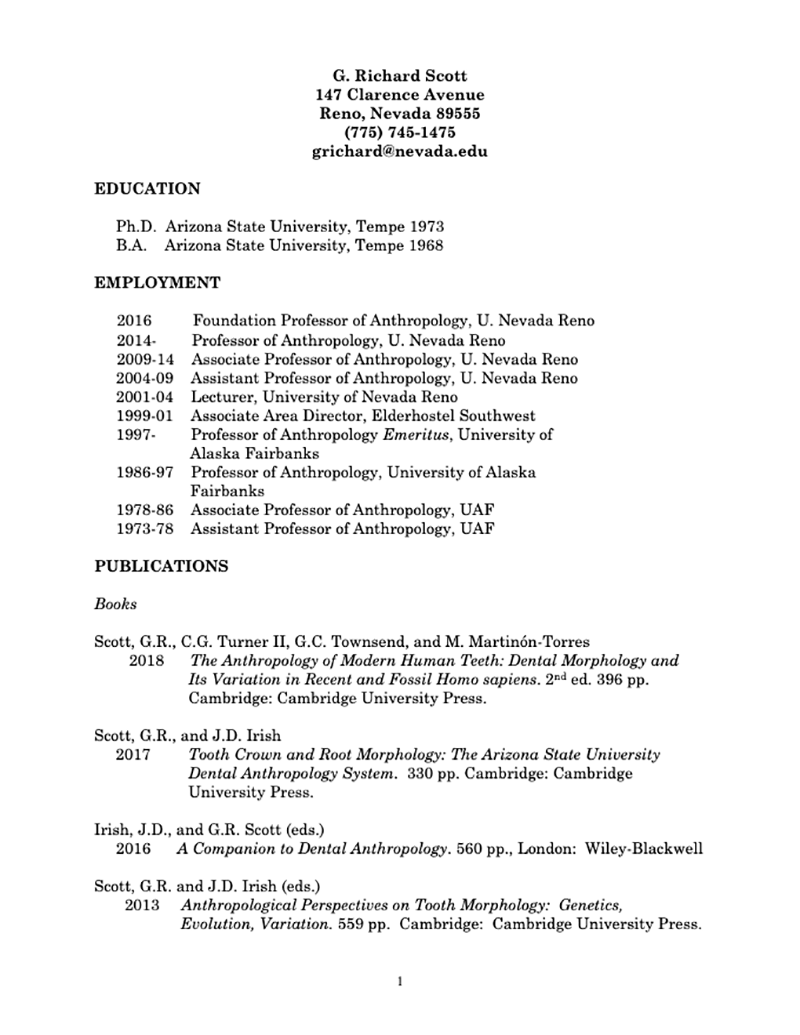
A closer look at resumes
A resume is a one- or two-page summary of your work experience, key skills, and job-related qualifications.
Resumes are used to apply for any job that’s not associated with academia. From your first job out of high school to your last, you’ll need to know how to make a strong resume if you want employers to take you seriously.
The biggest difference between a resume and a CV is that a resume emphasizes work experience and job skills over education, and is not comprehensive. In other words, when writing a resume you should only focus on your most relevant experience and omit details that you don’t think employers will care about.
Our free-to-use resume builder can make you a resume in as little as 5 minutes. Just pick the template you want, and our software will format everything for you.
What to include on a resume
Here’s a list of sections to include when you’re writing a resume:
- Contact information
- Resume summary
- Work experience
- Education
- Skills
- Other relevant resume sections (certifications, awards, projects, volunteer work, language skills, etc.)
Resume Example
This waiter/waitress resume sample shows how a standard resume should look:
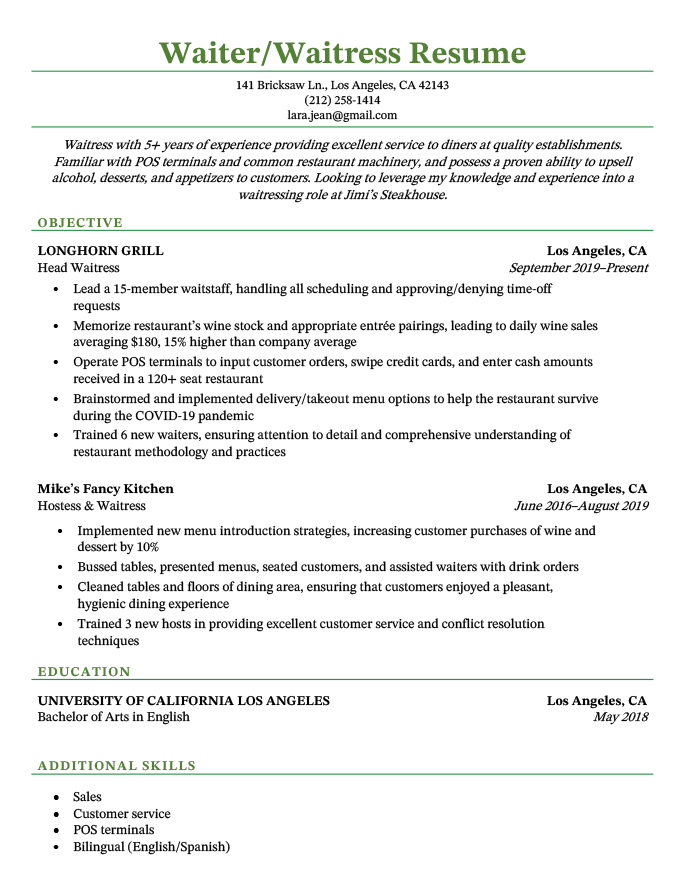
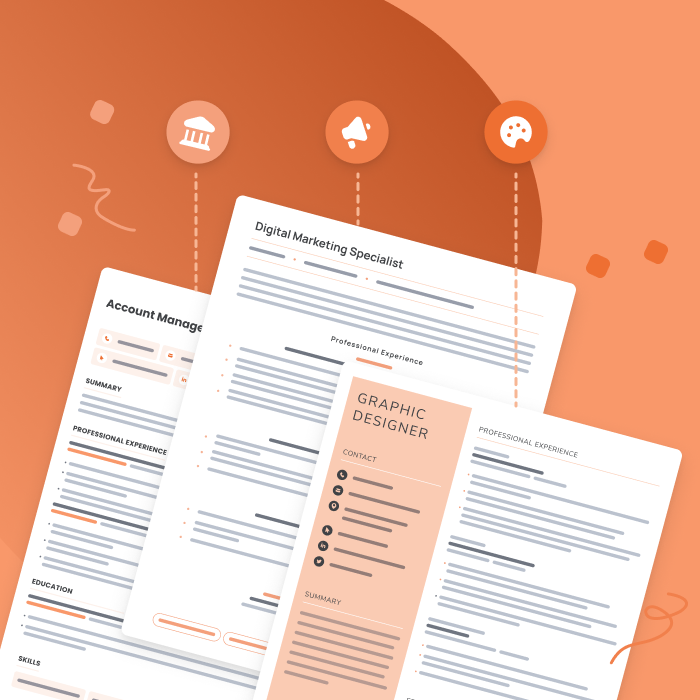
Resume examples for different industries
Not sure what your resume should look like? The best way to learn is by taking inspiration from resume examples written by other candidates in your industry.
CV vs Resume (international differences)
Still have questions? Here’s a breakdown of what CV and resume mean depending on where you’re located:
Like we mentioned earlier, if you’re applying for work outside the United States, a resume and a CV are the same thing.
In most European countries (including the UK), a CV is a one- or two-page document you use to apply for jobs. The term “resume” isn’t common, but is still understood by most hiring managers across Europe.
CVs for academic positions are also called CVs in Europe. However, you still might hear them called academic CVs because it makes the meaning clearer.
Canadian businesses use the word “resume” in the same way as Americans, likely because of Canada’s status as the US’s neighbor. Similarly, a CV is used to apply for academic posts.
In Australia and New Zealand, resumes and CVs are both used to apply for jobs. Resumes tend to be one page, summarizing the main highlights of your career, while CVs are around two to three pages and outline all of your professional experience.
Click to rate this article
4.7 Average rating


